
It seems daft to talk about a particular Harley-Davidson model as being iconic: Harley-Davidson itself is iconic and therefore, by extension, so are all the models.
Interestingly, it is not so much individual models that are iconic, but H-D engines: flat head, knucklehead, pan head, shovel head, and Evo are all names that are attached to different generations of Harleys. The individual model names never seem to gain any traction, or not nearly as much.

Of course, having written that last paragraph and sat thinking about it for a moment, I realise that I am (almost) completely wrong. Sportster, Road Glide, Electra Glide, and XR750 are all well-known model names so I’m kind of right and also kind of wrong. Oh, what the hell, it seems like a good way to start an article, so I’m going to stick with it.
If we are going to talk about individual iconic Harley models, then there is one that stands out head and shoulders above the rest, certainly from the last 30 years.
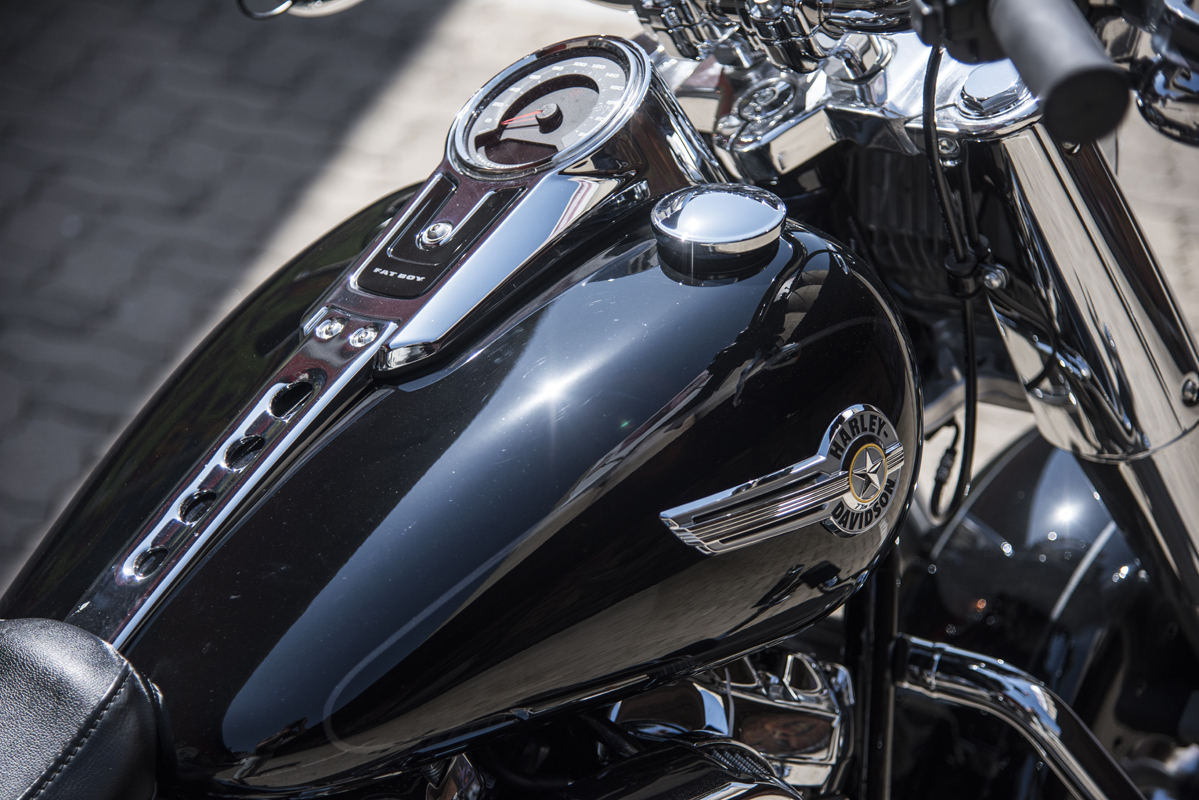
The model was shown in prototype form at the 1988 and 1989 Daytona Bike Weeks, went into production in 1990 and is still with us today. It is, of course, the Fat Boy.
You might think that Harley would be anxious to draw as little attention as possible to the size and weight of their motorcycles, but the Fat Boy name was a stroke of marketing genius: a sort of self-deprecating title that struck a chord with customers.

It has often been claimed that the name comes from the contraction of Fat Man and Little Boy – the names given to the two atomic bombs that were dropped on Japan by the U.S. at the end of the Second World War – as a sort of two-fingered salute to the Japanese motorcycle industry. It’s an interesting, if not a little xenophobic, idea but, thankfully, far from the truth.
“Fat Boy” actually comes from the observation that the motorcycle is rather wider than other bikes when viewed head-on. In a 2015 interview, Scott Miller, Harley-Davidson’s vice president of styling and product development, confirmed that the name was simply descriptive and had nothing to do with Harley’s Japanese competitors.
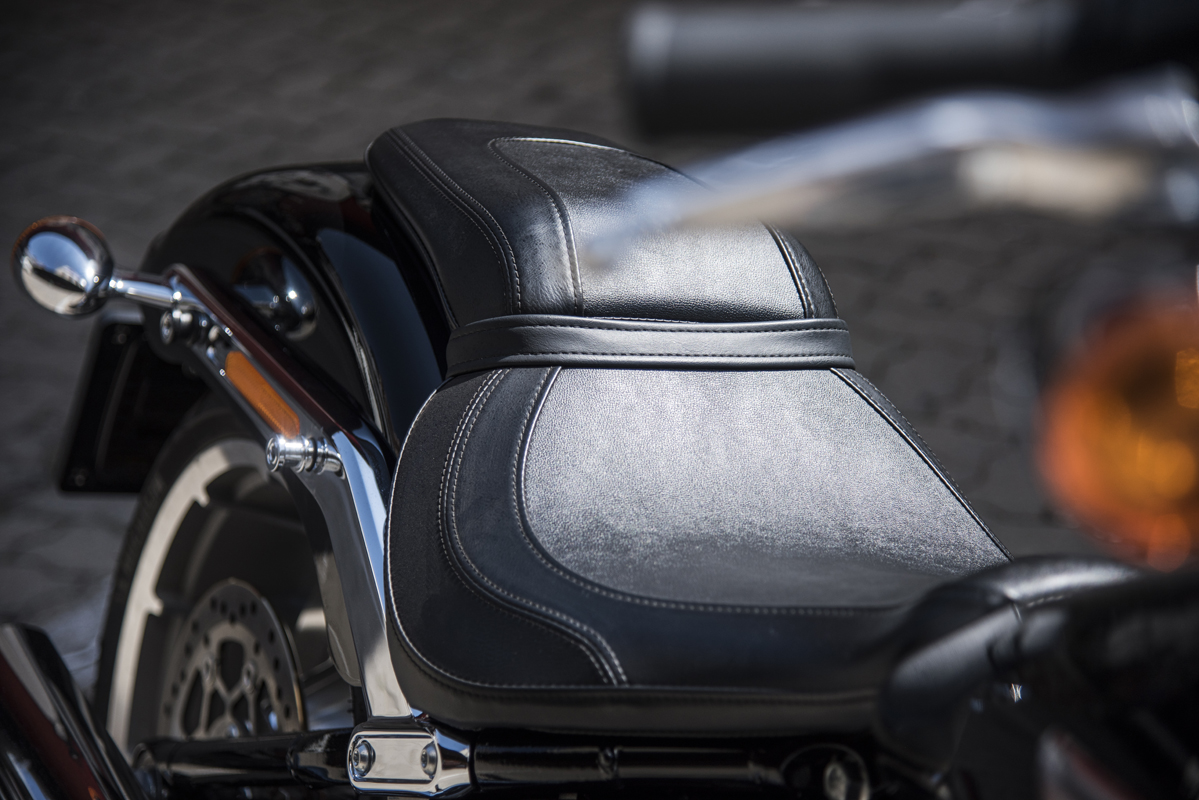
The Fat Boy was designed with a Softail frame. For those who might be in the dark as to what that means, it means a frame that looks as if it has a rigid rear end but, in fact, has a sprung swing arm with concealed springs.
Despite it being a Harley trademark, the Softail concept was originally designed in a garage in the 1970s by a mechanical engineer named Bill Davis and patented by him in 1976. Willie G. Davidson, the grandson of Harley-Davidson co-founder William A. Davidson originally turned down Bill Davis’ Softail concept, but the company later relented, buying the rights and designing its own Softail frame in-house.
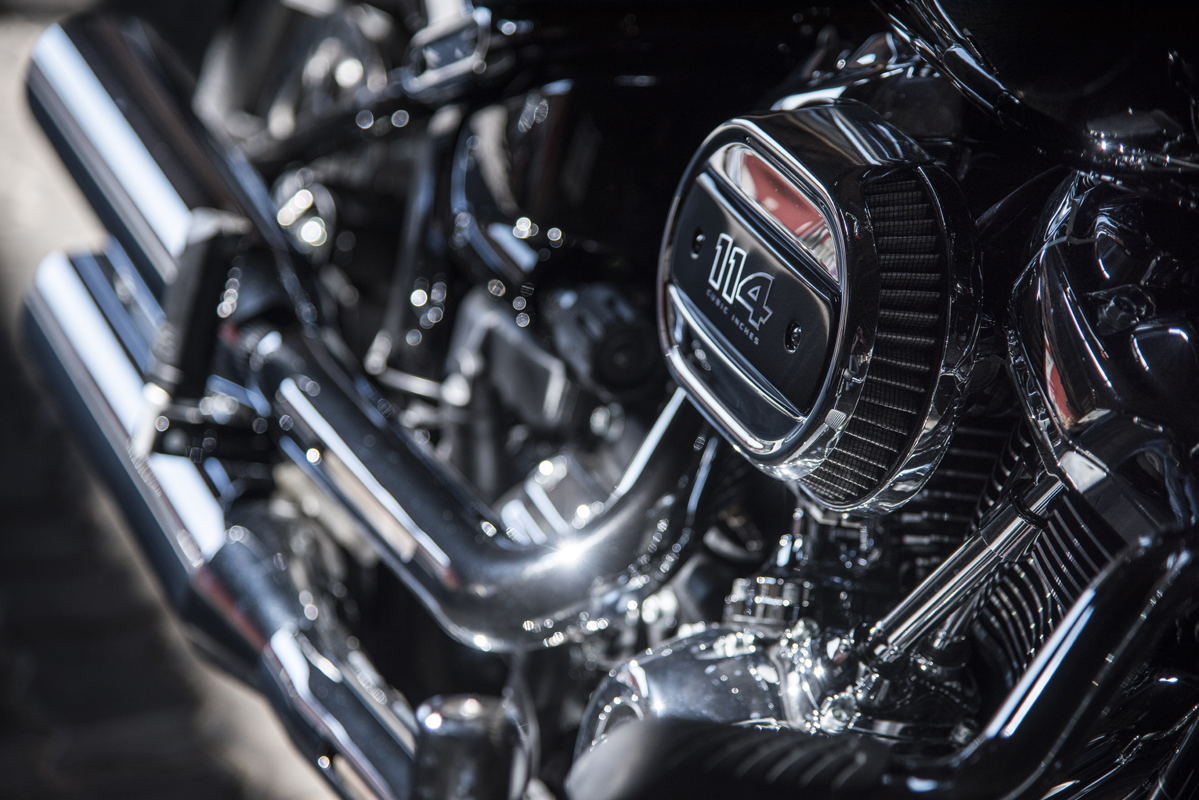
The Fat Boy certainly looked like no other motorcycle on the market and would, in all likelihood, have been a success on its own. However, in 1991, in a marketing coup whose reverberations are still being felt today, it had a starring role in the biggest movie of the year, Terminator 2: Judgement Day.
No need to rehash what happened in the movie – you’ve all seen it – but it was unbelievably successful as a marketing boost for a new model. Overnight, the Fat Boy went from being yet another overblown Harley-Davidson model to a design icon in its own right.

Fast forward to 2018 and, as is the way with all motorcycle models, the Fat Boy was in line for a make-over and refresh. That’s not as easy as you might think: how do you improve your best-selling model without losing the essence of what made it sell so well in the first place and alienating your customer base?
Well, somehow, Harley managed it and, if I may offer my ten cents worth of personal opinion: it looks better than ever. In fact, I’d go so far as to say it is my favourite Harley-Davidson model of them all.

As ever, Harley-Davidson Mzansi was only too eager to lend us their demo Fat Boy for a few days and the only problem I could see was just that: it was only for a few days! The pressures of commerce come first, I know, but, oh boy, did I wish I wasn’t giving it back so soon!
It’s hard to explain if you’ve never ridden a Harley, the sense of occasion you feel when you are riding one. Riding any Harley is something completely different and special in motorcycling, but when it’s one that you really want to be on and to be seen on, it takes things to a whole new level.
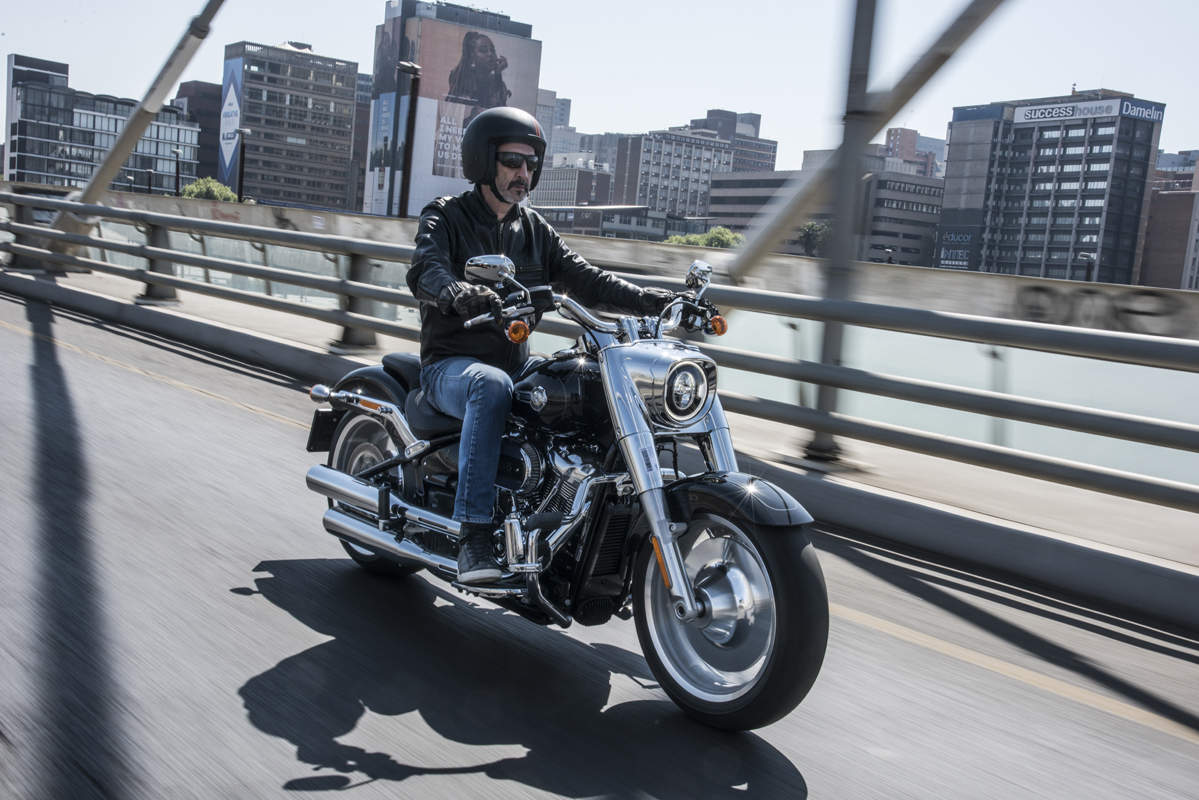
It’s not as if the Fat Boy rides better than any other Harley: it’s not as if it is faster or handles better than any other Harley. It’s certainly not because it makes you feel like you are Schwarzenegger (well, not all the time…) but there’s just something about it. Maybe it’s the riding position – sitting low, arms stretched out wide, pulling your shoulders and torso slightly forward, legs splayed and feet on the footboards – that just makes you feel as if you look badass!
The 2022 Fat Boy is at once long, low and imposing but, somehow, has a delicacy of a line which keeps drawing the eye to it and, crucially, your eyes are never beaten into submission. It should, by all rights, be a brute of a bike but Harley has managed to make a big bike look like a big bike but not look ridiculous. Maybe it’s just all those years of practice?

As it comes off the showroom floor, the sound coming from the exhaust is, at first, a little disappointing: it is exceedingly muffled and low-key. After a while, however, I start to appreciate this unusual reticence for the Fat Boy to shout about itself. It does enough of that with its looks without having to resort to party tricks. Of course, I know I am in the minority and I will admit that there are many levels of decibels between stock and open-piped but I kind of like flying under the radar.
Also – and call me old if you wish – I rather like not being deafened after a long ride!
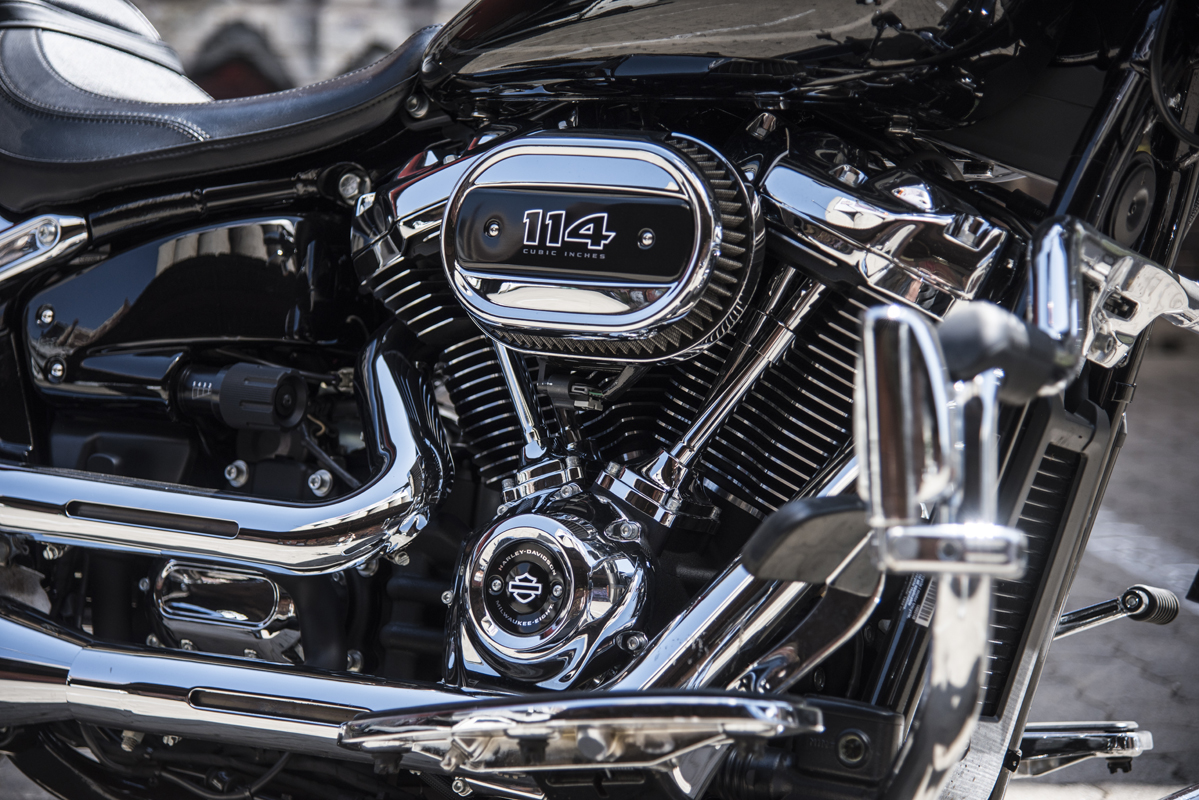
But that one mild and easily remedied criticism is all I have! I can’t think of anything that would prevent me from laying down a wad of cash and buying a Fat Boy. With the uncannily smooth 114 ci. Milwaukee Eight engine (the only option for the Fat Boy), goes like stink and, while the extremely wide rear tyre takes a while to get used to in low-speed cornering, it handles reassuringly well at any speed, the wide bars needing strong input which helps the bike feel all the more solid and planted for it.
All Harleys are viewed as blank canvasses for customising and the Fat Boy is no exception but there is not a single thing I would change about the 2022 version: to me, it’s just about perfect as it stands. The wheels are no longer solid but have perforations around the edge of the central disc, to help in cross winds, but they are still those iconic (that word again!) solid, heavy-looking wheels, just beautifully updated, like the rest of the bike.
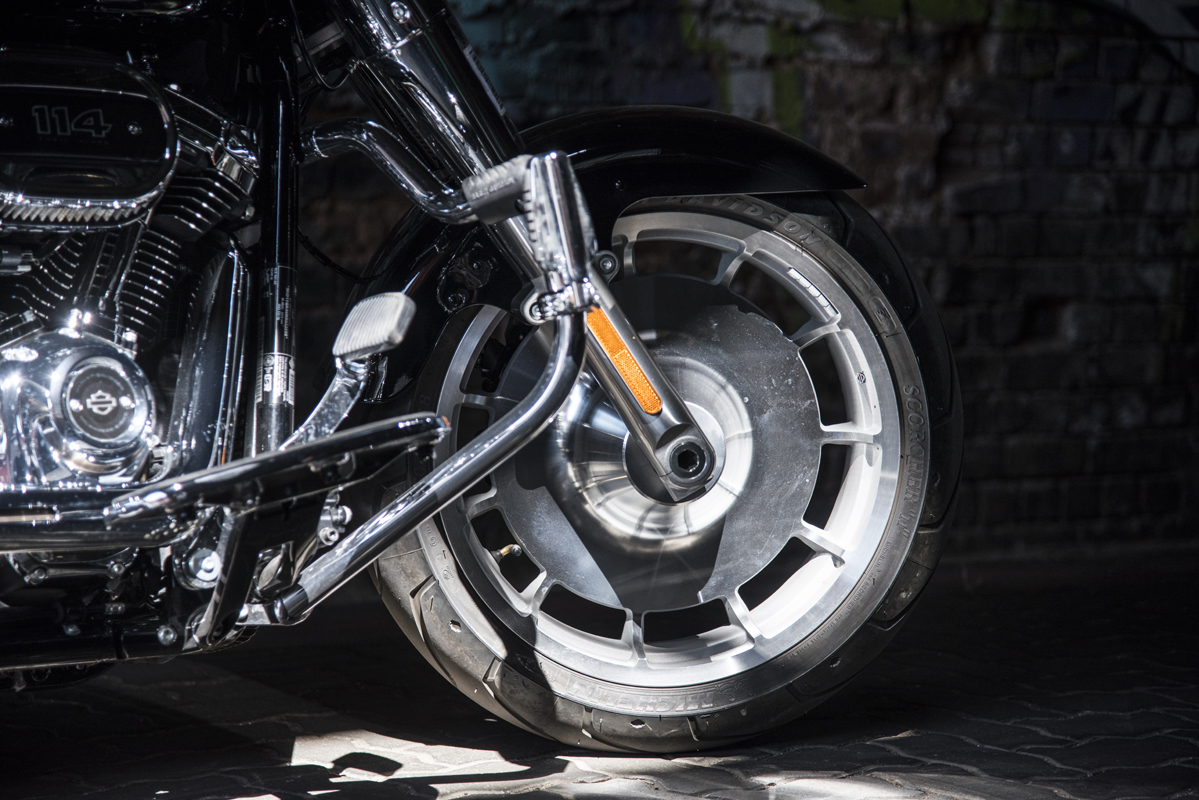
The paint and chrome are both deep and lustrous and it all just feels so right: even the agricultural and clunky gearbox is perfect for the nature of the riding experience.
For that, to return to a theme I touched on earlier, what riding the Fat Boy is; an experience, an occasion. Yes, it’s just a frame with an engine and a pair of wheels, as is every motorcycle but, just like a song which uses the same seven notes as every other song, it’s the way all the elements have been put together that has created something unique and special. I would even go so far as to say the Fat Boy is the best Harley-Davidson you can buy today.
Our thanks to Harley-Davidson Mzansi for the loan of the Fat Boy. Being their demo model, it is available for anyone with a full motorcycle license to try.
I recommend that you do!

Harley-Davidson Fat Boy
For more information on the bike featured in this article, click on the links below…




